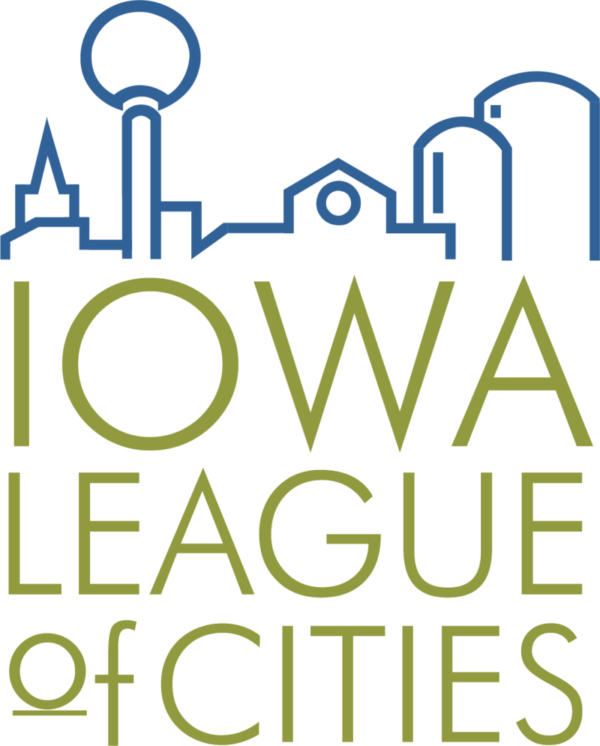HF 718 and SF 2442 Analysis
*Important Disclaimer: the HF 718 and SF 2442 analysis on this page is our current “unofficial” understanding of the law. The League is also aware that SF 2442, passed in the final days of the 2024 Iowa Legislative session, will modify a few areas of this law.
Senate File 2442: Property Tax Changes | Cityscape article, July 2024
Summary of the New Property Tax Law – House File 718 | Cityscape article, June 2023
Impact of House File 718 on City Property Taxes | Cityscape article, August 2023
House File 718: Analyzing the Impacts | Cityscape article, November 2023
HF 718 recording | October 2023
HF 718 recording | HF 718 presentation slide deck | June 2023
Summary of the New Property Tax Law
In our analysis, divisions 2, 5, 6, 7, 8, 9, 10, 13, and 14 include impacts on city governments. At a high level, HF 718 includes:
- Consolidation of levies and creation of a newly-defined adjusted city general fund levy (ACGFL)
- Levy limitation based on property tax valuation growth “tiers”
- New homestead exemption for residential property owners of age 65 or more
- Military service exemption expansion
- Property tax abatement agreements and limits
- Regional transit funding
- County auditor reports to distinguish revaluation and other additions to the tax base
- Required statement to be mailed to each property owner
- Changes to the budget timelines, forms, hearings and processes
- Single date annually for bond elections
- Bond financing (new general corporate purpose bonding limitations) and reporting requirements
Below is a summary containing a basic analysis of each division of the bill that the League believes impacts cities. Again, please note that this is an unofficial analysis, and is subject to updates. Please check back to see any new updates or Q&A as we move forward.
Division II: New General Fund Levy & Levy Limitations
Division II creates a new adjusted city general fund levy (ACGFL) that combines several current levies into one. This new ACGFL is then subject to potential limitation or reduction for fiscal years 25-28, depending upon the city’s non-TIF taxable valuation growth compared to the previous year. Beginning in fiscal year 29 (FY 29) all cities go to a $8.10 ACGFL maximum going forward and the levy limitation calculation ceases. (For clarity, those cities under $8.10 in FY28 will be allowed to go up to the $8.10 maximum beginning in FY29; those cities above the $8.10 in FY28 will be reduced to a maximum of $8.10).
What Levies are Combined?
The levies combined include Section 384.1 – the current general fund levy (up to $8.10) for FY 24, Section 384.8 – the emergency levy (up to $0.27) for FY 24, any amount levied under Section 24.48 (appeal) for FY 24, and any amount levied for FY 24 from Section 384.12 subsections:
- 384.12 (1) Instrumental/Vocal Music Groups
- 384.12 (2) Memorial Buildings
- 384.12 (3) Symphony Orchestra
- 384.12 (4) Cultural & Scientific Facilities
- 384.12 (5) County Bridge
- 384.12 (6) Mississippi or Missouri River Bridge Construction
- 384.12 (7) Bridge Purchase
- 384.12 (8) Contract for Use of Bridge
- 384.12 (9) Aid to a Transit Company
- 384.12 (11) Rent, Insurance, Maintenance of Civic Center
- 384.12 (12) Operation & Maintenance of City-owned Civic Center
- 384.12 (13) Planning a Sanitary Disposal Project
- 384.12 (15) Levee Improvement Fund in a Special Charter City
- 384.12 (16) Maintain Institution Received by Gift/Devise
- 384.12 (18) City Emergency Medical District
- 384.12 (20) Support Public Library
What Levies are not included in the new ACGFL limitation?
Debt service, pensions, employee benefits, operation and maintenance of a municipal transit system or regional transit district, aviation authority, tort and self-insurance, capital improvement reserve fund, support for a local emergency management commission, emergency services districts, and a levy to exceed a maximum amount set in Code with narrow/newly-defined parameters.
Important Timing Notes:
The baseline ACGFL year is FY 24; the first annual ACGFL adjustment will be for the FY 25 budget year. This legislation consolidates the levies into a new ACGFL permanently. However, the levy limitation calculation (deriving the next year’s maximum ACGFL levy) is limited to a four-year period (FYs 25-28). Beginning with FY 29, cities would be able to select a levy rate for the ACGFL of up to $8.10, regardless of their growth or previous ACGFL rate.
Note: if a city’s ACGFL were above $8.10 in FY 28, they would be required to reduce to $8.10 beginning in FY 29.
Note: SF 2442 (passed in 2024) included a technical correction to allow a city whose actual levy rate for its current fiscal year is $0 per $1,000 of value to levy up to $8.10 for the next fiscal year.
Note that the assessment process generally applies every other year for most properties. For that reason, growth rates might vary year-to-year.
Calculating the New Adjusted City General Fund Levy (ACGFL)
The steps below show how to calculate your next-year ACGFL.
1. Find your city’s non-TIF taxable value including gas & electric (and excluding ag land and ag building) on which property taxes are calculated for the current fiscal year. This is the amount on line 2a of your budget certification page (which can be found here: https://dom-localgov.iowa.gov/budget-search). For example, to calculate the new ACGFL in FY 25, you will begin with the line 2a value from the FY 24 budget certification page.
2. Identify your non-TIF taxable value including gas & electric on which property taxes are calculated for the next budget year, and calculate growth compared to the current budget year (step #1 above). This is the amount you would enter on line 2a of your budget certification page. To do this, divide the next-year non-TIF taxable growth by the current-year non-TIF taxable growth. For example, when calculating the new ACGFL in FY 25, this would be dividing line 2a for FY 25 by the line 2a value for FY 24.
3. The baseline year for the ACGFL is FY 24; the levy limitation begins with the FY25 budget year. Calculate your baseline general fund levy (ACGFL). To do this, go to your city’s budget certification page (page 1 of your FY 24 budget). The budget archives can be found: https://dom-localgov.iowa.gov/budget-search.
From there, combine (sum) all of the levy rates for the levies being merged. In addition to your existing regular general fund levy (up to $8.10), these are Section 384.12 subsections 1, 2, 3, 4, 5, 6, 7, 8, 9, 11, 12, 13, 15, 16, 18 and 20; the emergency levy (Section 384.8); and any amount levied under Section 24.48 (appeal) for FY 24.
As you plan your FY 25 budget, use the FY 24 baseline ACGFL you just calculated. For your FY 26-28 budgets, use the current year ACGFL as you prepare your next year’s budget. For example, when preparing your FY26 budget, look up your FY 25 ACGFL for this step.
4. Based on the result of steps #2 and #3, follow the applicable option for fiscal years 2026-2028, per the changes in SF 2442, adopted in the 2024 Iowa Legislative session:
Tier I: your city’s growth rate from step #2 above is less than 2.75%
- If your city’s ACGFL from step #3 is greater than $8.10 AND your non-TIF taxable value growth from step #2 is less than 1.03, stop. You may use your calculated ACGFL for the current year as a maximum ACGFL for the next budget year.
- If your city’s ACGFL from step #3 is less than $8.10 AND your non-TIF taxable value growth from step #2 is less than 1.03, stop. $8.10 is your maximum ACGFL for the next budget year.
Tier II: your city’s growth rate from step #2 above is between 2.75%-3.99%
- If your non-TIF taxable value growth from step #2 is between 1.0275-1.0399, multiply your step #1 result by 1.01. Continue to step #5.
Tier III: your city’s growth rate from step #2 above is between 4%-5.99%
- If your non-TIF taxable value growth from step #2 is between 1.04 and 1.0599, multiply your step #1 result by 1.02. Continue to step #5.
Tier IV: your city’s growth rate from step #3 above is 6% or greater
- If your non-TIF taxable value growth from step #2 is 1.06 or greater, multiply your step #1 result by 1.03. Continue to step #5.
5. Sum the ‘property taxes certified’ (with utility replacement request) that are generated by the levies you combined in step #3 for the current year. These are found on your budget certification pages on the same lines as the combined levies.
6. Calculate the following: 1,000 * (amount from step #5 / amount from step #4)
This is your new maximum ACGFL for the next year’s budget, for FYs 26-28. Remember that beginning with FY 29, all cities select an ACGFL of up to $8.10. (Note: this is regardless of growth from the previous year. And, for FY 29, a city whose ACGFL was previously above $8.10 would be reduced to $8.10 going forward).
Division V: Homestead Property Tax Credit & Exemption
Division V creates a new homestead exemption for property owners aged 65 and over, in addition to the current homestead credit. This additional exemption is $3,250 for FY 25 and increases to $6,500 beginning FY 26 and forward. The current homestead credit will continue to be state-funded, however, there is no state reimbursement for the exemption created in this division. This will result in a reduction in taxable value for local government. SF 2442 requires that the county recorder, county treasurer, county assessor, city assessor, or other government body maintain confidentially the names, addresses, and dates of birth of persons receiving the 65+ homestead tax exemption.
Division VI: Military Property Tax Credit & Exemption
Division VI increases the military service exemption for eligible property owners to $4,000 beginning FY 25. The military exemption will not be funded by the state in any amount for FYs beginning FY 25 and forward. This will result in a reduction in taxable value for local governments.
Division VII: Property Tax Abatement Agreements and Limits
Division VII requires that minimum assessment agreements for commercial properties be created and agreed upon in writing before the projects are eligible for property tax abatement under a revitalization area established under Chapter 404. The agreement must contain specified information, including a minimum actual value for the completed improvements, and must be certified by the assessor. This applies to revitalization areas created in FY 25 and after, and for first-year exemption applications in existing revitalization areas filed on or after July 1, 2024.
In addition, Division VII prohibits property tax abatement for the school district portion of revitalization areas for residential projects established under Chapter 404, beginning with revitalization areas created in FY 25 and after, and for first-year exemption applications in existing revitalization areas filed on or after July 1, 2024.
Cities are encouraged to consult their bond counsel on the potential impact of this provision of the legislation.
Division VIII: Transit Funding
Allows the city of Des Moines to go up to 7.5% franchise fees, with any portion above 5% required to be dedicated to regional transit (DART).
Division IX: County Auditor Evaluation Reports
Beginning with assessment year 24 (AY 24 or FY 26), annual county auditor reports must distinguish such values as revaluation or other types of addition to the value within the abstract to be provided to the Iowa Department of Management.
Division X: Local Government Budgets and Taxpayer Statements
Division X requires that county offices mail each property taxpayer an annual statement and change the budget process and timelines. Beginning in FY26, all political subdivisions, including cities, must file a report annually by March 5 with the Iowa Department of Management (DOM) containing the information specified in the new law to be included in the mailings. For FY 25, this deadline was March 15, but was moved to March 5 under SF 2442, passed in 2024. Also included in SF 2442 was the requirement that the mailings include a link to information about the statement on the Iowa Department of Management website. Then, by March 15 (annually, also beginning with FY26), the county auditor, using the information compiled and calculated by DOM, must send to each property owner or taxpayer within the county by regular mail an individual statement with the specified information (see below) broken out by political subdivision comprising the taxpayer’s taxing district.
Division X requires political subdivisions to hold a public hearing on the proposed property tax amounts for the budget year and new taxpayer statements. This is a hearing in addition to the public hearing required under Code of Iowa Section 24.9 (to approve the annual budget) and must be separate from any other meeting of the governing body, including any other meeting or hearing related to the political subdivision’s budget. No other business unrelated to the new hearing requirements can be discussed at the meeting at which this hearing is held. At the hearing, the political subdivision shall receive oral or written testimony from any resident or property owner of the political subdivision. After all, testimony has been received and considered, the governing body may decrease, but not increase, the proposed property tax amount to be included in the political subdivision’s budget.
Notice of the public hearing shall be published not less than ten nor more than twenty days prior to the hearing in a newspaper published at least once weekly and having general circulation in the city. However, if the city has a population of two hundred or less, publication may be made by posting in three public places in the city.
Notice of the hearing shall also be posted and clearly identified on the political subdivision’s internet site for public viewing beginning on the date of the newspaper publication and shall be maintained on the political subdivision’s internet site with all prior year notices and copies of the statements mailed. Additionally, if the political subdivision maintains a social media account on one or more social media applications, the public hearing notice or an electronic link to the public hearing notice shall be posted on each such account on the same day as the publication of the notice.
The law states that a municipality shall not certify or levy in any fiscal year a property tax unless and until the estimates have been made, filed, and considered. The verified proof of publication of the notice shall be filed in the office of the county auditor and preserved by the auditor. It clarifies that the levy will not be valid unless notice is published, mailed, and filed. However, the bill states that “failure of an owner or taxpayer to receive a statement under section 24.2A shall not invalidate a levy.”
This division also repeals Sections 331.433A and 384.15A related to the former “Maximum Property Tax to Levy” notice and hearing.
This division moves the city’s budget certification deadline to April 30 annually, beginning with the FY 25 budget.
The new statements to be mailed to each property owner or taxpayer must include:
- The sum of the current fiscal year’s actual property taxes certified for a levy for all of the district’s levies and the combined property tax rate per $1,000 for such tax amount for the current fiscal year;
- The combined effective property tax rate for the district calculated using the sum of the current fiscal year’s actual property tax certified for levy of all of the district’s levies above;
- The combined amount of the property tax dollars to be certified for all of the district’s levies for the budget year and the proposed combined property tax rate per $1,000 for such levies;
- If the property tax dollars specified under (3) exceed the current fiscal year’s actual property tax dollars certified for levy specified in (1), a detailed statement of the major reasons for the increase, including the specific purposes or programs for which the district is proposing an increase;
- For FY25, an example comparing the amount of property taxes on a residential property with an actual value of $100,000 in the current fiscal year and such amount on the residential property using the proposed property tax dollars for the budget year, including the percentage difference in such amounts; for FYs 26 and after, an example comparing the amount of property taxes on a residential property with an actual value of $100,000 in the current fiscal year and 110% of such amount on the residential property using the proposed property tax dollars for the budget year, including the percent change in such amounts;
- For FY25, an example comparing the amount of property taxes on a commercial property with an actual value of $100,000 in the current fiscal year and such amount on the commercial property using the proposed property tax dollars for the budget year, including the percentage difference in such amounts; for FYs 26 and after, an example comparing the amount of property taxes on a commercial property with an actual value of $300,000 in the current fiscal year and 110% of such amount on the commercial property using the proposed property tax dollars for the budget year, including the percent change in such amounts;
- The district’s percentage of total property taxes certified for levy in the owner’s or taxpayer’s taxing district in the current fiscal year among all taxing authorities;
- The date, time, and location of the district’s public hearing on the information contained in the statements.
- Information on how to access the political subdivision’s internet site, the political subdivision’s statements under this section, and other budget documents for prior fiscal years.
Division XIII: Bond Elections
Division XIII requires that all elections on the question of issuing bonds or other indebtedness are to be held on the first Tuesday after the first Monday in November (once annually), beginning with elections occurring on or after July 1, 2023. The Commissioner of Elections is required to mail notice to each registered voter in the jurisdiction, including the full text of the public measure to be voted on at the election. This notice must be mailed not less than ten nor more than twenty days before the election.
Division XIV: City Bond Financing & Annual Finance Report (AFR) Requirements
Division XIV includes a 30% increase to the limits to enter into loan agreements payable from the general fund and a 30% increase to the limits for general corporate purpose reverse referendum thresholds. This division is effective beginning with FY 25. It also adjusts related population definitions.
This division adds the requirement that an estimate of the annual increase in property taxes as the result of the bond issuance of a residential property with an actual value of $100,000 be added to the notice of proposed action to issue a bond for an essential corporate purpose.
Beginning with the annual financial report published by December 1, 2025, each report shall include a list of bonds, notes, or other obligations issued by the city during the most recently completed fiscal year, and the applicable lists for other fiscal years beginning on or after July 1, 2024, for which obligations remain unpaid, payable from any source, including the amount of the issuance, the project or purpose of the issuance, whether the issuance was approved at the election, eligible to be subject to a petition for an election, or was exempt from the approval at the election as the result of statutory exclusions based on the population of the city or amount of the issuance, and identification of issuances from the fiscal year or prior fiscal years related to the same project or purpose.
FAQ:
Q: We thought that the FICA/IPERS levy budget line could not be used unless the general fund was at its maximum? How does HF 718 impact this?
A: Iowa’s Administrative Code 545.4.2 (see below/link). As the admin code refers to the “tax rate limit of that fund,” the newly calculated general fund limit (ACGFL) will apply to each individual city. For example, if a city’s ACGFL was limited to $6.00 in a budget year, then that city must choose to use the full $6.00 ACGFL before using the FICA/IPERS line. The ACGFL would not need to be at $8.10 in order to use the FICA/IPERS line unless that was the city’s calculated ACGFL limit.
Reference:
545—4.2(384) Mandatory procedures. These employee benefits must be budgeted in the city general fund up to the tax rate limit of that fund with the excess being budgeted in the trust and agency fund for those employees being paid from the city general fund: 1. Employer’s share of FICA under Code of Iowa Section 97C.10. 2. Employer’s share of IPERS under Code Section 97B.9.
https://www.legis.iowa.gov/docs/iac/rule/11-22-2006.545.4.2.pdf






